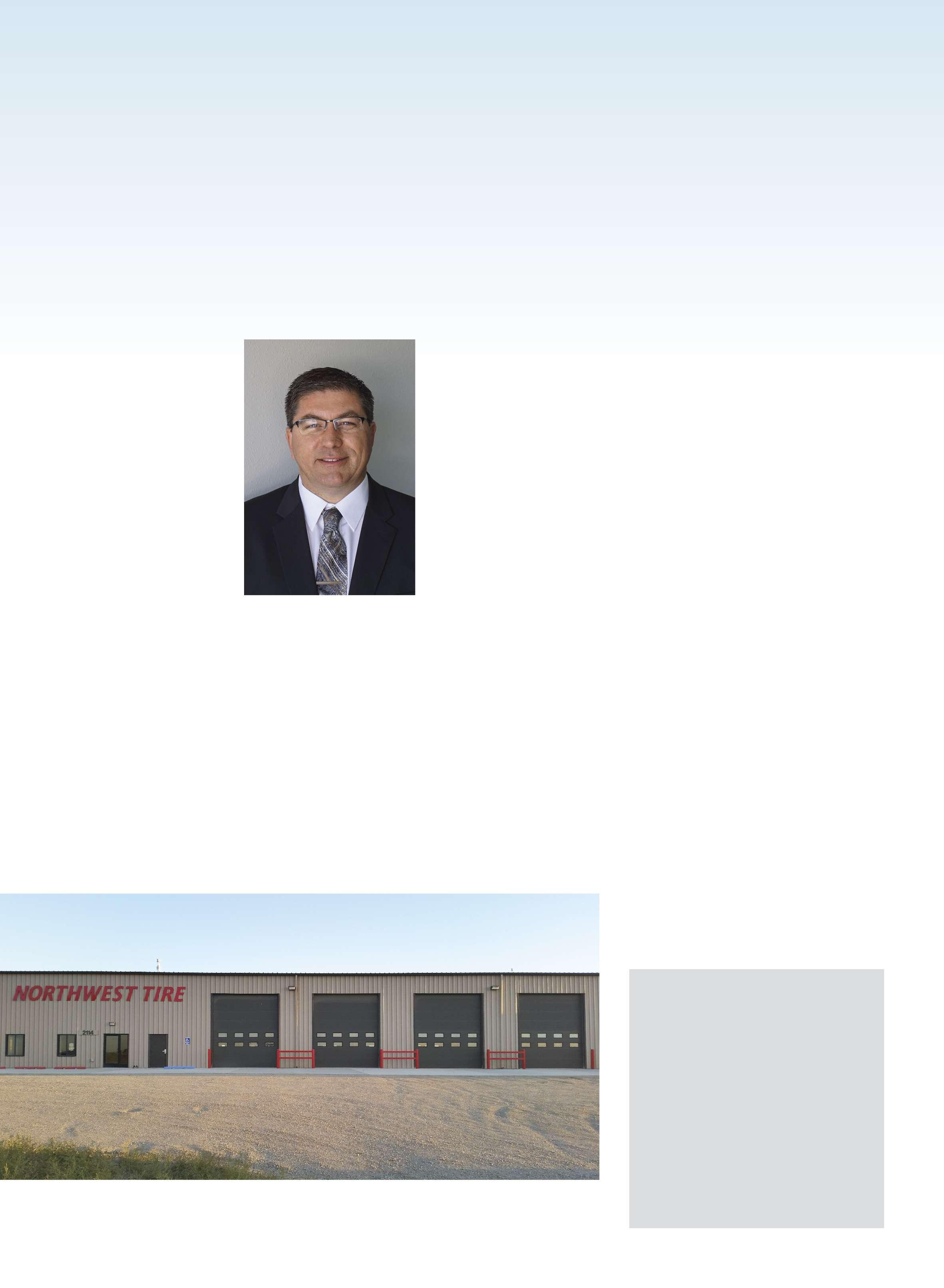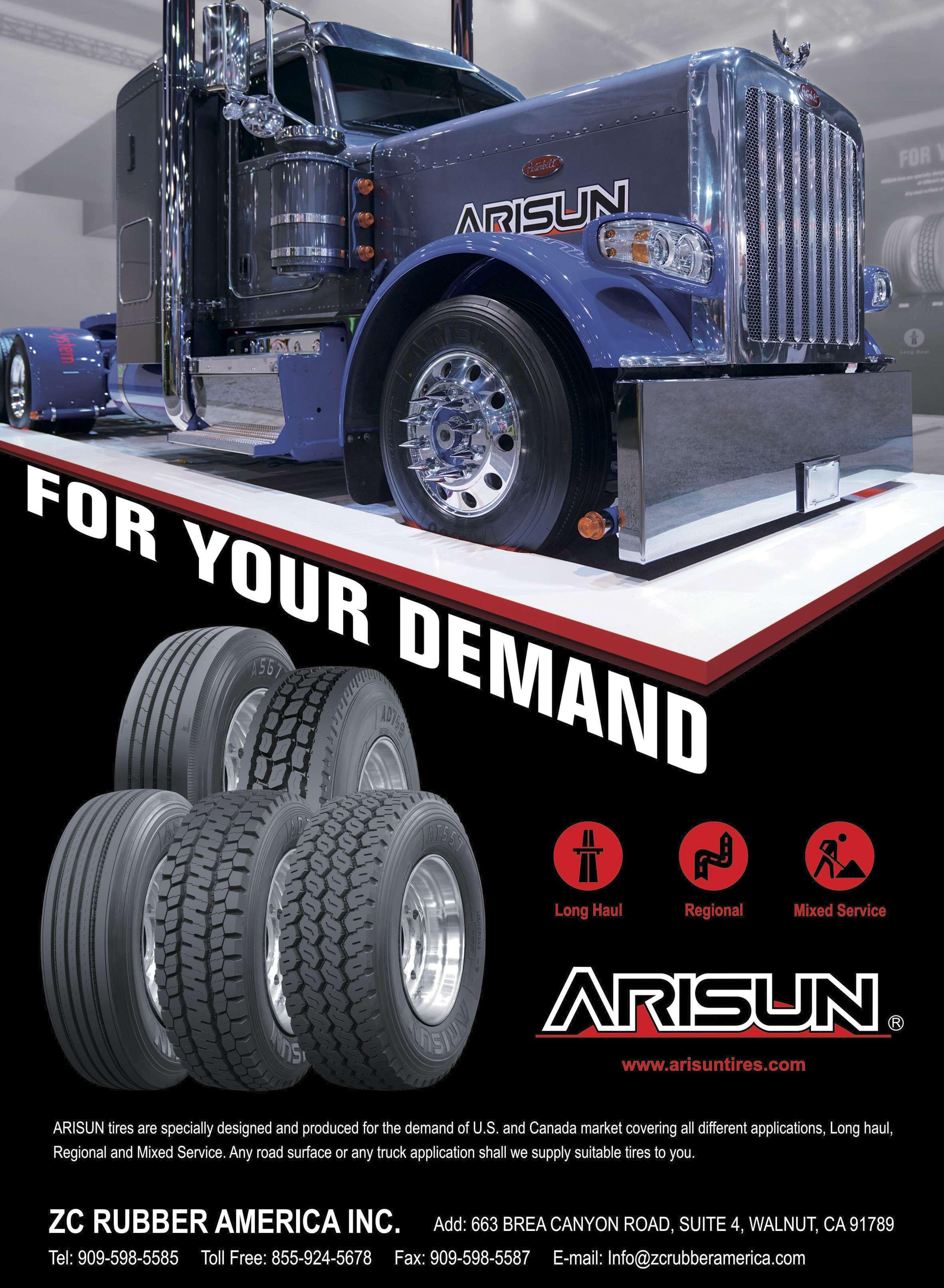
7 minute read
Northwest Tire invests in commercial tires for the future

from Modern Tire Dealer - June 2018
by EndeavorBusinessMedia-VehicleRepairGroup
CUSTOMERS DEMAND WINTER TRACTION AND 16-PLY TIRES
By Joy Kopcha
In the last three years the economy has dealt Northwest Tire Inc. a pretty tough hand. Oil prices fell. The Canadian exchange rate tumbled, and farm commodity prices dropped. Those are three important pieces to the backbone of the
Bismarck, N.D.-based tire business, and especially its commercial business.
Yet the 41-year-old tire dealership is thriving, expanding its footprint with new stores and adding locations in existing markets. In the North Dakota communities of Bismarck, Dickinson, Minot and
Jamestown the company has opened truck and farm tire stores to accommodate more customers. By taking commercial tire service out of the existing stores in those communities Northwest Tire believes it is opening up more capacity in its retail bays, allowing both sides of the business to grow.
“Our commercial business is up,” says Kory Grossman, the company’s vice president, who has spent the last 25 years working for Northwest Tire. He says the company is growing organically within its existing stores, and also with the addition of new locations.
Northwest Tire has 17 stores, and all but one of them is in North Dakota. (There’s a store in Bemidji, Minn., that does a combination of retail and commercial business.) Northwest Tire also has four wholesale locations and two Bandag retread facilities that cap medium truck tires.
The company’s commercial tire business is diverse. “We’ve got big national accounts all the way down to the farmer who has one truck,” Grossman says. “We don’t have the luxury of running only large fleets or only farmers, because they shut down for months.” The company needs to retain both kinds of customers.
And it has to do that work 365 days a year, no matter the weather. That’s a real issue for Grossman, as winter brings cold, wind and snow. In February 2018 the mean temperature in Bismarck was 8.6 degrees Fahrenheit. On the coldest night of this past winter, Jan. 13, the low temperature was -29 degrees F.
Grossman says it comes down to the company’s employees. “Our staff, that’s really the deal breaker.
Those preparations are making sure the air lines on the company’s service trucks don’t freeze and using the correct viscosity
index oil for the booms and hydraulic equipment. Service truck operators have to be careful with tire lubricants and mounting compounds because they can freeze onto the wheels and tires when mounting tires on site. Air guns get so cold technicians can’t touch them without wearing gloves.
The winter temperatures are a key driver in the design of Northwest Tire’s stores. “In almost all of our places you can get the truck inside, out of the elements,” Grossman says.
“Our biggest challenge is, ‘When is it too cold to go out?’” There are times the wind is blowing 25 or 30 mph and the temperature is -25 degrees F. Grossman says those super cold snaps don’t usually last long, but there might be one week where it’s a real safety concern. And that’s when a customer’s brakes are more likely to freeze. Those calls for help usually don’t come in during regular business hours.
And it’s a rarity when Northwest Tire doesn’t take those calls.
Eight of Northwest Tire’s 17 stores offer commercial services, including this location in Grand Forks, N.D. The company’s most popular truck tire brands are Bridgestone, Firestone, Toyo, Sumitomo and Yokohama.

ONLINE SALES TIRE TRENDS There’s probably one big thing standing in It’s probably not a surprise that truck the way of truck tires and other commercial drivers in North Dakota and Minnesota tires becoming a hot online commodity are focused on how their tires perform in — their size. Even though there are online the winter. Grossman says winter traction retailers who sell medium truck tires, and is an especially important trait with drivers even bigger tires, Grossman doesn’t think of Class 4-7 trucks who run short hauls. FedEx or UPS drivers will be eager to load But Northwest Tire customers also are and unload them. It comes down to those buying more 16-ply tires to accommodate “convenience issues,” he says. trucks with heavier front axle ratings of
Those who have talked about ordering 13,200 pounds, compared to the previonline relay a list of concerns ous long-standing weight of that keep them from pull12,000 pounds. (The extra ing the trigger. “They have weight load has come as truck concerns about casing trades, manufacturers have added prices are not always comequipment to comply with petitive, shipping costs, return emissions regulations; it’s had freight, and handling them.” a particular effect on the steer They don’t get too many instalaxle.) Grossman says there’s lation requests for commercial been “a migration” as customtires bought online, he says. ers have replaced 14-ply tires
Northwest Tire’s farming with 16-ply tires. customers usually aren’t lookThe company’s truck ing at tires online. They’re tire customers are making a more likely to ask about differsimilar gradual migration to ent tires if they feel their curKory Grossman says, wide-base tires. But Grossman rent ones haven’t performed “commercial is part of our long-term growth plan.” says they’re more apt to make well. But if they’re satisfied that switch when buying a with their tire performance, new truck. “We see more new they’re brand loyal, Grossman says. equipment ordered with wide-base tires
Large fleets are more versed on new than changeovers,” Grossman says. And products in the marketplace. Grossman even then, it’s been a slow, gradual trend. says they see them in trade publications. “Fleets that can calculate or quantify the “They don’t come into our stores and say, cargo savings to freight savings to either ‘I read about this XYZ brand online.’ haul more or make less trips are eager to
“The average commercial customer use ultra wide-base tires.” has several people like us calling on them Grossman is “an advocate for retreading,” several times a week. They don’t have the and serves on the Bandag dealer council. desire to go online. They’re exposed more He’s cautious when talking about the effects than the average (retail) customer.” of low-cost import tires on the market. The company’s retread operations have been affected, but he says it’s difficult to measure a direct correlation. “It is hard to know the exact amount because of the change in business for the oil and farming businesses that has happened the last couple of years.” Grossman believes most fleets that have a tire program are tuned into the benefits of retreads. “I don’t think you can run a good tire program without including retreading.”
The company has a steady base of shoppers that specifically seek tires made in the U.S. — “about half of our customers.” At the same time, there is a market for imported tires.
In the last year, Grossman says Northwest Tire has expanded its offerings from the Bridgestone and Firestone brands, and also now carries the full lineup from Sumitomo.
INVESTING IN EQUIPMENT AND EMPLOYEES The tire dealership doesn’t switch brands often, but upgrading equipment is another story. “That’s endless,” Grossman says. Those decisions are driven by the need to be more efficient, and to keep employees safe.
“We’re buying tire trucks that have hands to handle bigger OTR tires. All of our commercial outlets have heavy-duty tire changers and balancers with lifts. We’re pulling double trailers to haul more tires.” He believes every company pickup truck has a hydraulic lift gate.
Grossman says four or five years ago service trucks cost $100,000. The last one he bought was $186,000.
All of those investments help Northwest Tire conduct business, but they also keep the company’s workers safe. “We do things so our employees aren’t 50 years old and their bodies are shot.”
Also in CTD
Truck tire market: 2017 U.S. replacement medium/heavy truck tire brand shares ..................... 36 ‘You’ve got to pay to play’: Tips for selling trailer tires and towing safety to consumers ............ 41 Commercially Viable ......................... 46 AG Tire Talk ........................................ 52 Tire pressure management: How TPMS and ATIS technologies meet fleet needs ................................ 55






